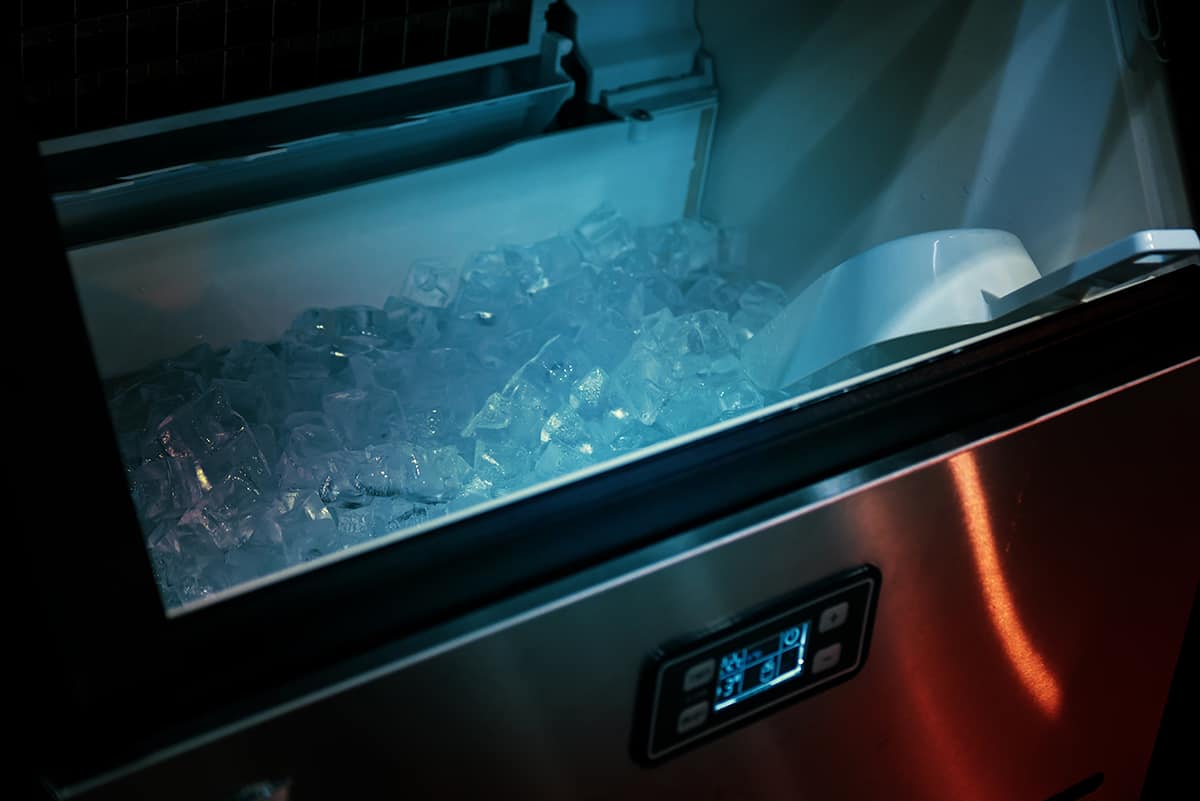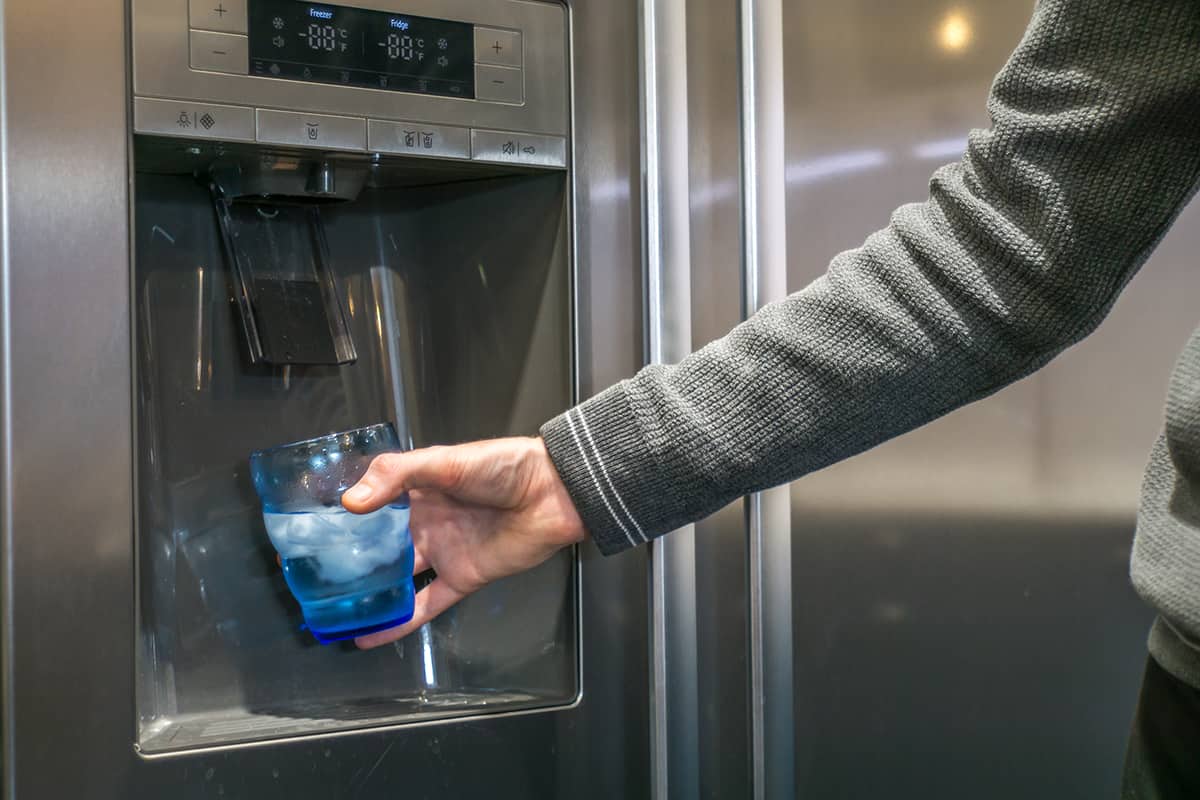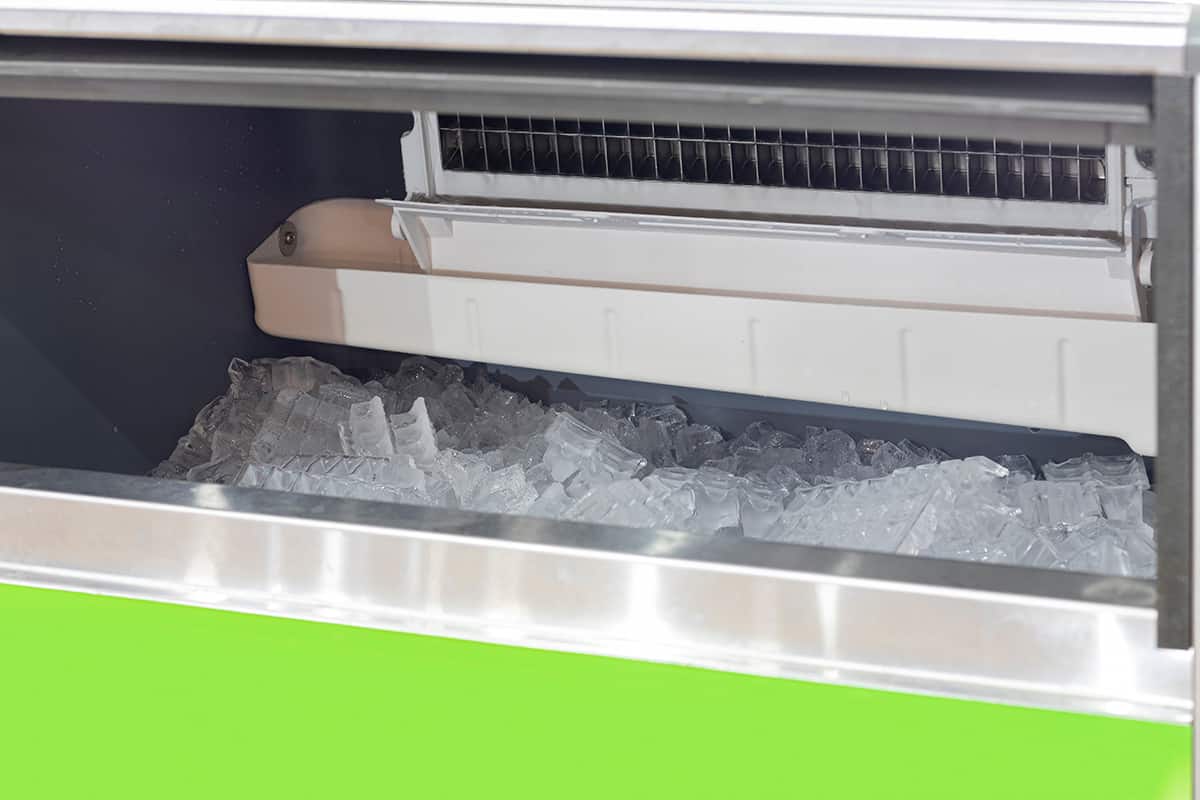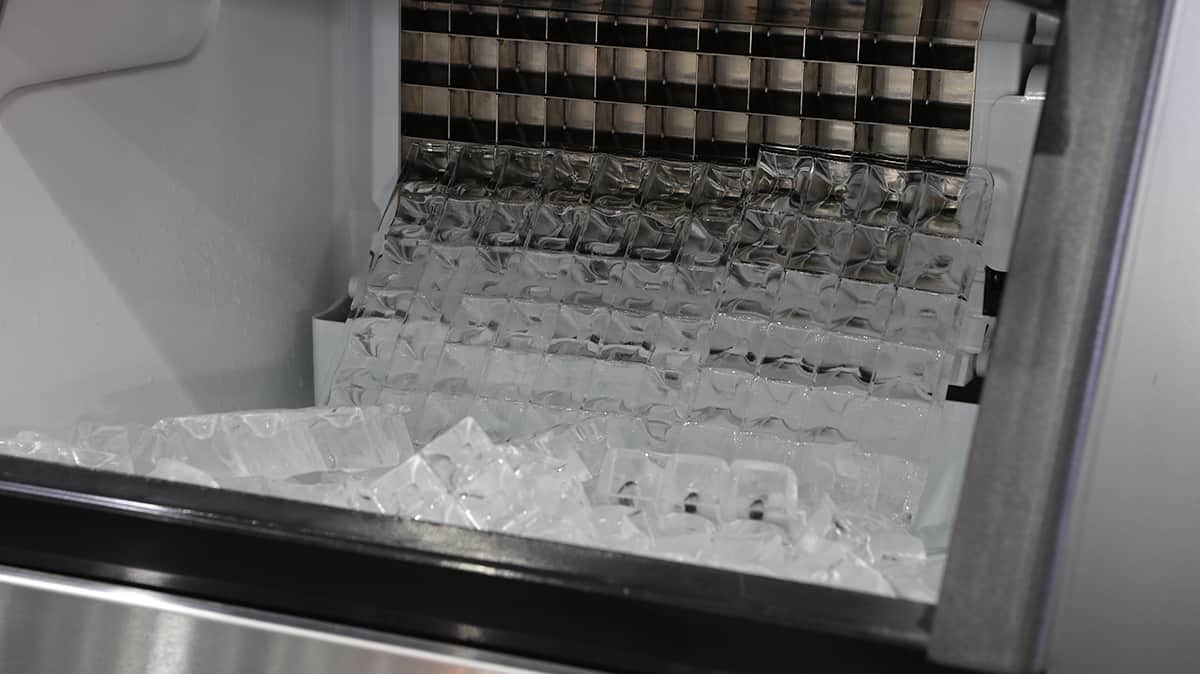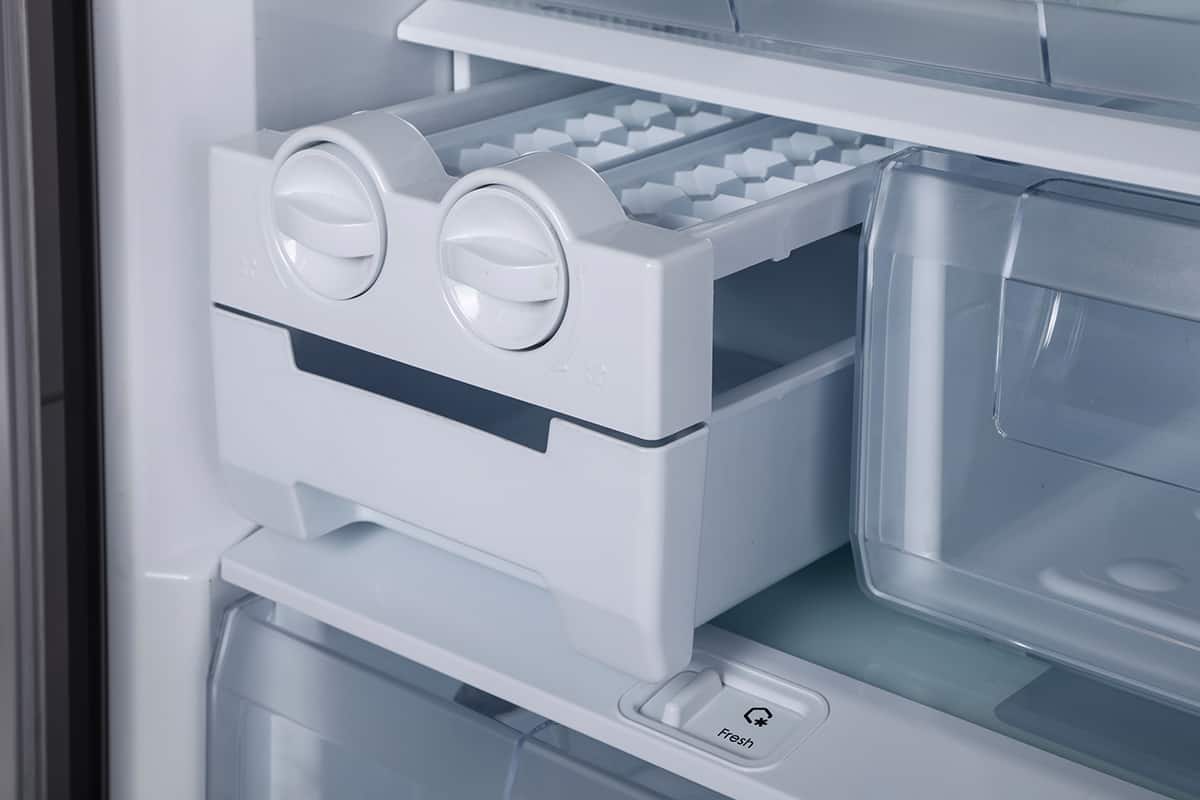If you want instant ice but don’t want to invest in a brand-new fridge, then you should think about getting a countertop ice maker. Frigidaire makes an excellent ice maker, but it’s not prone to certain mechanical problems occasionally.
So, what should you do if you find your Frigidaire countertop ice maker not doing what it’s supposed to do?
Below are some of the most common causes of why a Frigidaire countertop ice maker will not work:
- The ice maker is not plugged in.
- There is no water in the water reservoir.
- The water in the reservoir is too hot.
- The water line is clogged.
- The water pump is defective.
- The prongs do not have any more refrigerant.
In this guide, I will explain these causes in more detail, as well as what you can do to troubleshoot the problem. I’ll also talk about how to maintain a countertop ice maker so that it doesn’t experience as many technical difficulties in the future.
How Does a Countertop Ice Maker Work?
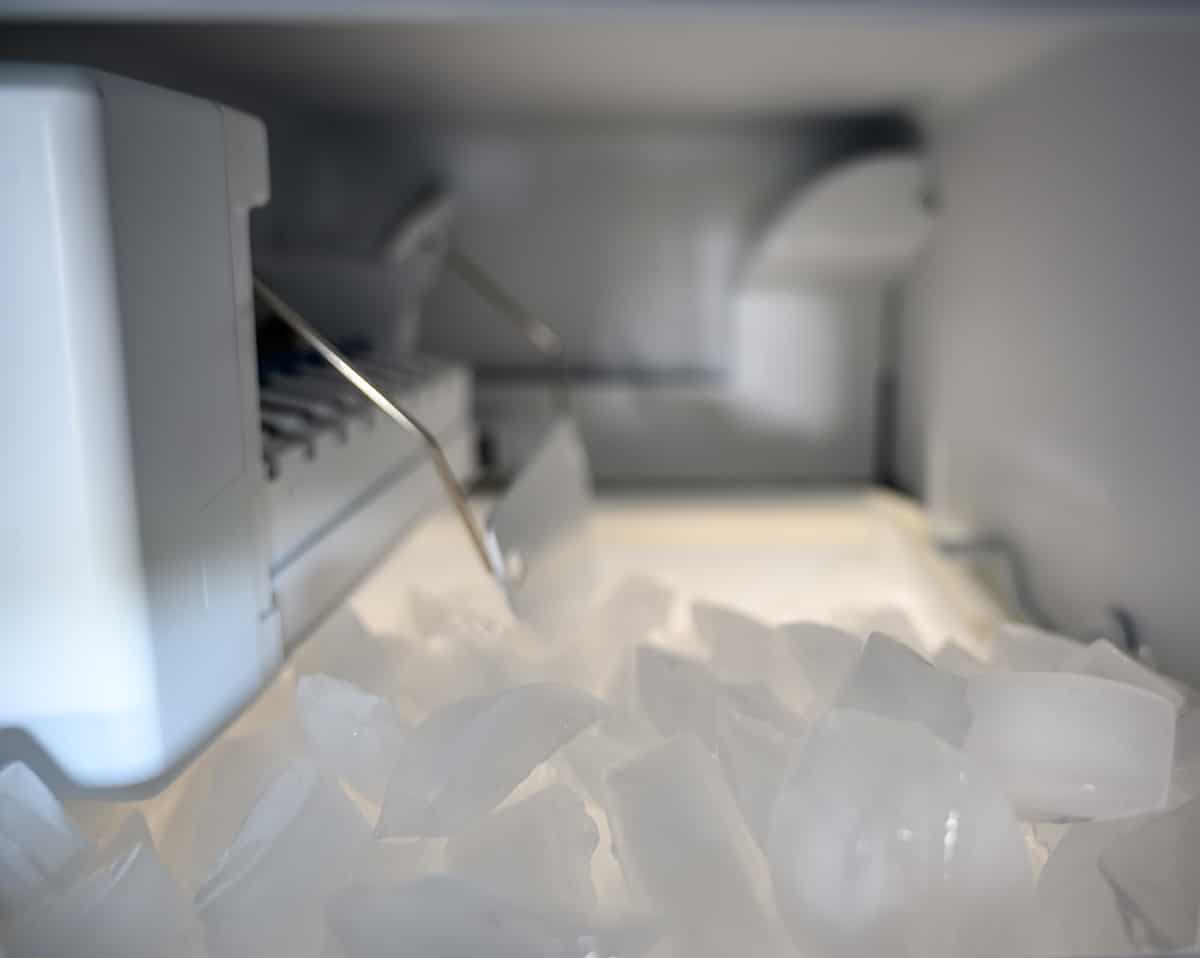
Before going jumping into how we can fix a countertop ice maker, it’s important that we first understand how this device works.
There are a few parts that we should familiarize ourselves with, which you can find below:
Water reservoir—The tanks that you fill with water whenever you want the ice maker to begin an ice cycle.
Water pump—The electric pump that transfers water from the reservoir to the ice tray via a water line.
Water line—The transparent pipe inside an ice maker that moves water from the reservoir to the ice tray.
Ice tray—The tray that is filled with water.
Prongs—The dull, downward-facing spikes filled with a refrigerant that has a tiny hole in the center.
Ice bucket—The perforated container where the finished ice cubes sit.
Now, let’s see how an ice maker works.
The owner fills the water reservoir with water.
The water pump suctions water from the reservoir and transfers it to the ice tray.
The prongs dip into the tray, with the displaced water flowing back into the water reservoir.
After 9 to 12 minutes, the prongs lift away from the ice tray.
The ice maker blows a small amount of air through the prong’s holes to eject the ice cubes.
The ice cubes fall into the ice bucket.
When the ice cubes melt, the water refills the water reservoir, and the ice cycle begins anew.
Frigidaire Countertop Ice Maker Not Working (and Troubleshooting)
From the description above, you can see that portable ice makers rely on several components to work together seamlessly and produce bullet-shaped ice cubes. A defective component will throw a wrench in the entire operation, possibly preventing the ice maker from making any ice.
The following shows the most common causes that will force your Frigidaire portable ice maker to stop working. I will also describe how to troubleshoot each problem to get your ice maker working again.
1. The ice maker is not plugged in
The least-concerning problem of all is that you forgot to plug the ice maker in. I get it—you’re busy trying to figure out how to prepare enough glasses and drinks for a party that you might have left your Frigidaire portable ice maker unplugged. It happens to the best of us!
Solution: Plug the device into a wall receptacle
Carefully take the plug from behind the machine and plug it into the nearest wall receptacle. If you press the power button and the machine is on, then you can stop right here. You can tell what your ice maker is turned on by the gentle droning sound its motor and pump make.
However, if the machine still does not work, then try moving it to another receptacle. If that still doesn’t resolve the issue, then you may find the solution down below.
2. There is no water in the water reservoir
Portable ice makers are unlike built-in ice makers in freezers. They do not have an inlet valve where you can connect a water line. Instead, the user has to manually pour water into the water reservoir. If the water reservoir looks a little dry, then the machine’s water pump has nothing to transfer to the ice tray.
Solution: Fill the water reservoir
Take a pitcher or cup and fill it with potable water. Lift the ice maker’s lid and pour the water directly into the water reservoir. You can also pour the water into the ice bucket since its holes will allow water to drip directly into the reservoir. Now, turn the device (it’s plugged in, right) and try running a new cycle.
3. The water in the reservoir is too hot
As simple as it may be to refill a Frigidaire countertop ice maker’s reservoir, you should make sure that the water isn’t too hot. At most, the water should be blood-temperature (you won’t feel the water if you dip a finger into it). Hot water, even slightly warm water, can take forever for the ice maker to freeze, making it seem like your ice maker isn’t working.
Solution: Drain the water from the reservoir and fill it with fresh, cold water
You’ll find a plug on the side of the ice maker. If you remove the plug, water from the reservoir will drain out. So, take the machine next to your sink, remove the plug, and tilt the machine until all of the warm water has been drained. Replace the plug and pour fresh, cold water into the water reservoir. The colder the water, the quicker it will freeze.
4. The water line is clogged
The water line is an incredibly thin plastic pipe that connects the water reservoir to the ice tray. Over time, the line can become clogged due to using dirty water, or perhaps a strand of hair fell into the water reservoir unnoticed. When this happens, water will not move from one place to another, so the ice maker will not make ice.
Solution: Open the ice maker and clean the water line
To open the ice maker, look for screws and tabs on the main body of the machine. Remove the screws and tabs and carefully remove the case (the edges of the case can slice through skin!).
After removing the case, look around the machine for a transparent tube. The ends should be somewhere near the top (ice tray) and bottom (water reservoir) of the machine. Disconnect the pipe, blow into it (or run a long pipe cleaner through it), and reinstall the pipe and the case.
5. The water pump is defective
Ice makers may begin showing signs of slowing down as time progresses. If your Frigidaire countertop ice maker is older than 3 years, and if you use it constantly, then the water pump may be in trouble. However, for the most part, there’s a greater chance that something is stuck in the water pump, which is preventing it from suctioning water efficiently.
Solution: Clean the water pump
Remove the screws and the case of the ice maker as described above. Now, look for the water pump based on the diagram found in the owner’s manual. If you lost the manual, look for a white cylindrical object. Now, detach that object from the machine’s body.
Inspect the inside of the pump for debris or even a strand of hair. After it has been thoroughly cleaned, reinstall the pump and the case, and try to run an ice cycle.
6. The prongs have run out of refrigerant
Inside the prongs is a refrigerant that cools the prong’s exterior to subzero temperatures. When the prongs make contact with water in the ice tray, the water surrounding the prongs will freeze almost instantly. However, if the water doesn’t freeze, regardless of how long the prongs stay submerged in the water, then they’re probably out of refrigerant.
Solution: Replace the entire unit
Look, it’s possible to refill the refrigerant in your Frigidaire portable ice maker, but odds are if the prongs are empty, the machine is already over five years old. Refilling the prongs might not be as cost-efficient as purchasing a brand-new ice maker that’s ready to go straight out of the box.
Countertop Ice Maker Maintenance Tips
Clean the machine regularly
The more frequently you clean the machine, the less of a risk there is that the water line will become clogged, and the less frequently you will have to disassemble and reassemble the ice maker.
To clean the machine, run a few cycles with a 1:1 mixture of vinegar and water. The vinegar will also help descale calcified buildup inside the machine. Dispose of the vinegar mixture and pour fresh water in the machine to rinse it. Do this 2 or 3 more times and the machine should be completely vinegar-free and ready to make more ice.
Keep the ice maker away from heat
This means not taking the ice maker outdoors with you on picnics and trips (though everyone does this). Heat can increase the temperature of the water in its reservoir (remember: countertop ice makers have a freezer compartment), which can make it take forever to prepare a batch of ice.
